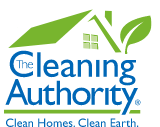If your household has come down with the latest bug, you don’t want to worry about cleaning. So, to help make the recovery process easier, we’ve put together a go-to list of critical areas to sanitize (and how to sanitize them).
A clean home can help prevent the future spread of germs, and nothing will make you feel better faster than a clean house.
Best Practices for Cleaning a House After Sickness
Before you get to scrubbing, let’s review the basics. We recommend that you:
- Always wear gloves when dealing with germy items.
- Use hot water where applicable.
- Focus on sanitization (whether with a store-bought solution or a homemade disinfectant).
- Evaluate what should be cleaned immediately and what can wait. Your time is valuable.
- Wait to do a full deep clean until after you and your family have mostly recovered, as cleaning during your illness may zap your energy.
How to Clean Your Home After Being Sick
After a bug has gone through your house, you might become overwhelmed, thinking you must sanitize everything.
Instead of trying to clean every single item and surface in your home, focus on these critical areas:
1. Bedding and Pillows
Bedridden family members will accumulate a large germ concentration in the bedding, especially on pillows. All bedding, including any mattress covers, should be put into your washing machine. If you’re healthy enough to go to a store, pick up a special antibacterial detergent. Your standard detergent can help clean, but sanitization isn’t its primary function. If you cannot get sanitizing detergent, add white vinegar or essential oils, like tea tree oil, to kill germs naturally. Check your pillow’s instruction tag before putting it in your washing machine. If you can’t wash your pillow, spray the outside with water and vinegar to kill germs. Make sure you let it air out properly before using it again.
2. High-touch Areas: Doorknobs, Light Switches, Remotes, Etc.
The more an item is touched, like a doorknob or a light switch, the more likely it is to have germs. Although it’s best to cough into the crook of an elbow, we sometimes cough into our hands, and germs are collected when blowing our noses. Use sanitizing cloths or a homemade solution of equal parts water and white vinegar with rubbing alcohol added to wipe down these surfaces.
3. Counters, Tables, and Nightstands
Remove any items from the surface before wiping them down to ensure you get complete coverage. Then disinfect each item before returning it to the counter or tabletop. Things that can’t be disinfected, like paper products or exposed foods, might need to be thrown out or recycled.
What's The Difference Between Cleaning and Sanitizing?
At first glance, cleaning and sanitizing might be the same thing. However, the differences are important to know to help your family recover. Cleaning will remove physical debris, such as crumbs and dust. Sanitizing will kill germs, allowing your family the necessary cleanliness to recover. After an illness, the CDC recommends a three-stage approach: cleaning, sanitizing, and disinfecting. These steps tackle the present germs in your home and help prevent future illnesses.
Schedule a One-Time Cleaning After Sickness in Your Home
Cleaning, sanitizing, and disinfecting after being sick probably aren’t the most appealing tasks, which is why you should have us do them for you. With a one-time cleaning from The Cleaning Authority, you can get a freshly sanitized home without putting in the hard work that comes with it.
We’ll deep clean your home, sanitizing everything that might have germs on it. Focus on recovering and leave the cleaning to us. Get a free estimate online or call (888) 658-0659 today.

